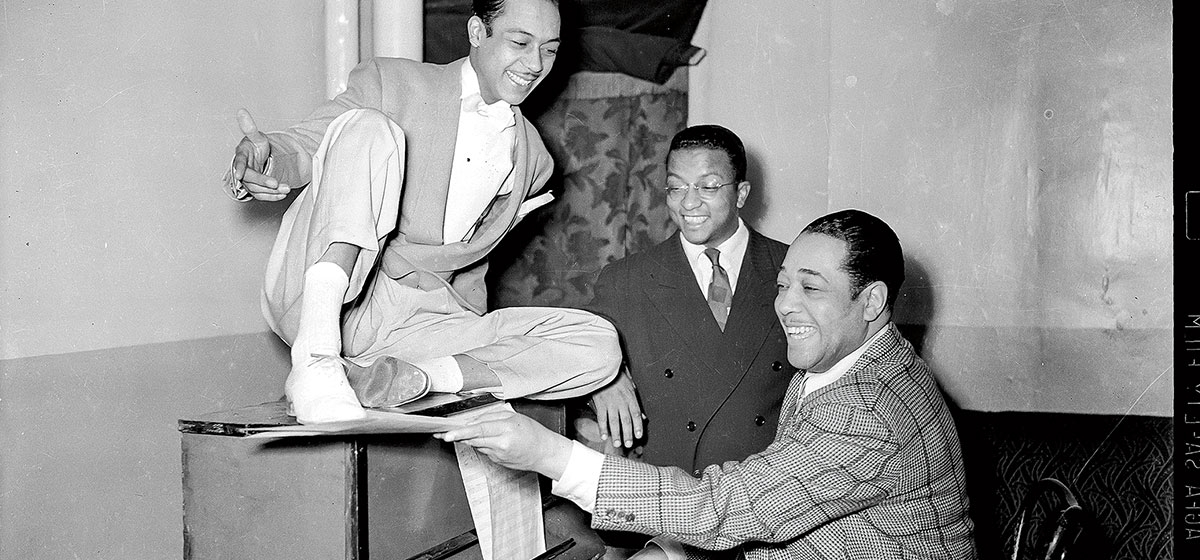A Terrific Look at the Sophisticated History of Black Pittsburgh

“Smoketown” is a gift to Pittsburgh on a number of levels. When an accomplished national journalist and author turns in a deeply researched and gracefully written work about your town, that’s a win. Beyond that, Mark Whitaker, a former editor of Newsweek, gives Pittsburghers the gift of enhanced understanding of their city, stretching back centuries. He chose a niche ready to be filled: the history of black Pittsburgh that is one of accomplishment and high culture, alongside the indignities of discrimination and prejudice.
I feel comfortable asserting that even the most enlightened white person will find new insights in this story of African- American Pittsburgh, told through the prism of music, sports and journalism. As one of those white people who claims to be somewhat enlightened, I feel less comfortable insisting that black Pittsburghers will find revelations within “Smoketown.” But Whitaker wrote the book to make everyone, here and elsewhere, appreciate the rich legacy of black Pittsburgh, as he states in the preface: “Under the dusky skies of Smoketown”—the nickname that Pittsburgh Courier writers gave to the city—“there was a glittering saga.”
While “Smoketown” is a rigorous work of nonfiction, based in primary sources and thoroughly footnoted, the reader can sense the personal reasons that motivated the author, although the text never slips into the first person. Whitaker dedicates the book to his grandparents. They represented high-achieving black Pittsburghers of their era. His grandmother Edith was an “Old Pittsburgher,” the term for those who arrived here before the Great Migration; his grandfather Cleophaus operated a well-known funeral home. Those details are bookended by the last paragraph of the acknowledgments. Whitaker notes his parents divorced when he was six and that he lost touch with his father. He thanks his mother for taking “her two mixed-race sons” from Massachusetts to Pittsburgh every year of their youth to stay in touch with their father’s extended family. With professional understatement, Whitaker reveals how black Pittsburgh loomed large in his childhood imagination, thanks to the diligence of his white mother.
The first chapter showcases Whitaker’s skillful method to establish Pittsburgh’s stealthy role in black American history. “The Brown Bomber’s Cornermen” describes the rise of boxer Joe Louis in the late 1930s. The story is fascinating in itself, against the backdrop of a looming war in Europe and a rivalry with Max Schmeling, Hitler’s favored pugilist. The Pittsburgh Courier, one of the leading national newspapers for a black audience, covers Louis’ career to the hilt. The reader is introduced to the paper’s key players—publisher Robert L. Vann, city editor Chester Washington and sports editor Bill Nunn.
For a spell, I was wondering how this national sports story, however well told, was fitting into the theme of Pittsburgh as “the Other Great Black Renaissance.” By the end of the chapter, the strands are woven together. The Courier’s sterling coverage of Louis over four years more than doubled circulation and helped turn it into a thriving business. “By championing the champion of their people, the colored men and women of Pittsburgh had also confirmed their place at the vanguard of black America.” Moreover, the paper’s clout had “helped propel a sea change in the allegiance of Negro voters,” from Republicans to Democrats, as later chapters describe. Pittsburgh now “fielded the best teams in black baseball, produced musicians who rewrote the language of jazz, and built nightclubs and watering holes so vibrant that the Hill District had come to be known as ‘Little Harlem.’ ”
Each of the 10 chapters read almost like a free-standing story, which makes the book easy to pick up and put down—a helpful feature in this era of distraction, though possibly at the expense of narrative drive. Then again, a kaleidoscopic view is an appropriate way to tell this multifaceted story. We natives think of Pittsburgh as a complicated, sui generis place, and Whitaker helps make the case. “In older cities such as New York, Boston and Washington, the Negro aristocracy looked down on mobsters. … But in Pittsburgh, all worlds met on Wylie Avenue” (the Hill District’s main drag, in case you are new in town). “The racketeers were part of the elite.”
“Smoketown” is a crash course in Pittsburgh’s jazz talent, a legacy that is often cited by people like me without real understanding. The roll call is astounding— Roy Eldridge, Earl Hines, Billy Eckstine, Kenny Clarke, Mary Lou Williams, Ahmad Jamal, Billy Strayhorn and more. Whitaker excels in showing how Pittsburgh influenced their art, or gave them the gumption to get on out of town. “Erroll Garner would come to be remembered as an inexplicable genius, as if he had come out of nowhere. But serious students of jazz knew where the music came from”—elements of “stride and ragtime piano, swing and bebop, of Broadway show tunes and polyrhythmic percussion. … And the many talented musicians from his hometown knew where he had first encountered those influences and developed the ambition to outshine them.”
Lena Horne spent formative years in Pittsburgh. After a spurt of early touring fame, she was back in town in the early 1940s, working through a troubled marriage with small children. A locally acclaimed pianist, Charlotte Enty Catlin (who also taught Strayhorn), “played at the homes of rich white folks around the city, and suggested that Lena might come along to sing. … The soirees helped Lena improve as a singer. In such intimate settings, she could hone her natural talent for working a lyric.” That’s one of the few appearances in the book of white Pittsburghers; their role is much like that of adults in “Peanuts” cartoons—an unseen, offstage force. But examples of everyday offense abound. When Horne went to the hospital to deliver her first child, her obstetrician met her at the door to wish her well. “Lena didn’t know that black doctors in Pittsburgh weren’t allowed inside white hospitals,” Whitaker reports. “She became so panicked that it took her two days to deliver her baby.”
“Smoketown” concludes with a full-bodied look at the life and work of August Wilson, “The Bard of a Broken World.” It coincides with the familiar story of the depletion of the Hill District by perhaps well-intentioned “urban renewal” that went awry. Evaluating Wilson through the lens of music, Whitaker fixes on the budding writer’s embrace of the blues, a new influence “because it had never really been black Pittsburgh’s music.” But to Wilson, “there was something about the blues that captured the world he saw around him on the Middle Hill… a cry that you could hear if you paid close enough attention.”
While Whitaker does nothing to take away from the achievements of August Wilson, there’s a disappointment that “Wilson’s Pittsburgh was being etched in the national imagination as the definitive depiction of black American life in the 20th century.… Much of black Pittsburgh’s legacy was missing from Wilson’s work”—the legacy of “migrants who came to the city with high degrees of literacy and cultural sophistication, or the entrepreneurs [and] the life of the Hill’s black social elite” or “the fertile creative culture, fed by strong arts programs in the city’s high schools.”
By writing the definitive book on all of the above, while not ignoring the harsher realities of black Pittsburgh, Mark Whitaker is looking to widen the story, for the record. I often hear anecdotes about young folks showing up in Pittsburgh after reading some buzzy articles about the new hip scene here—which is invariably as white as the driven snow. Here’s hoping that “Smoketown” becomes part of a movement toward another renaissance.





